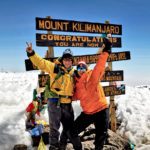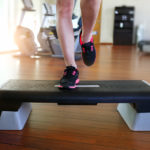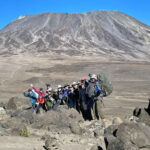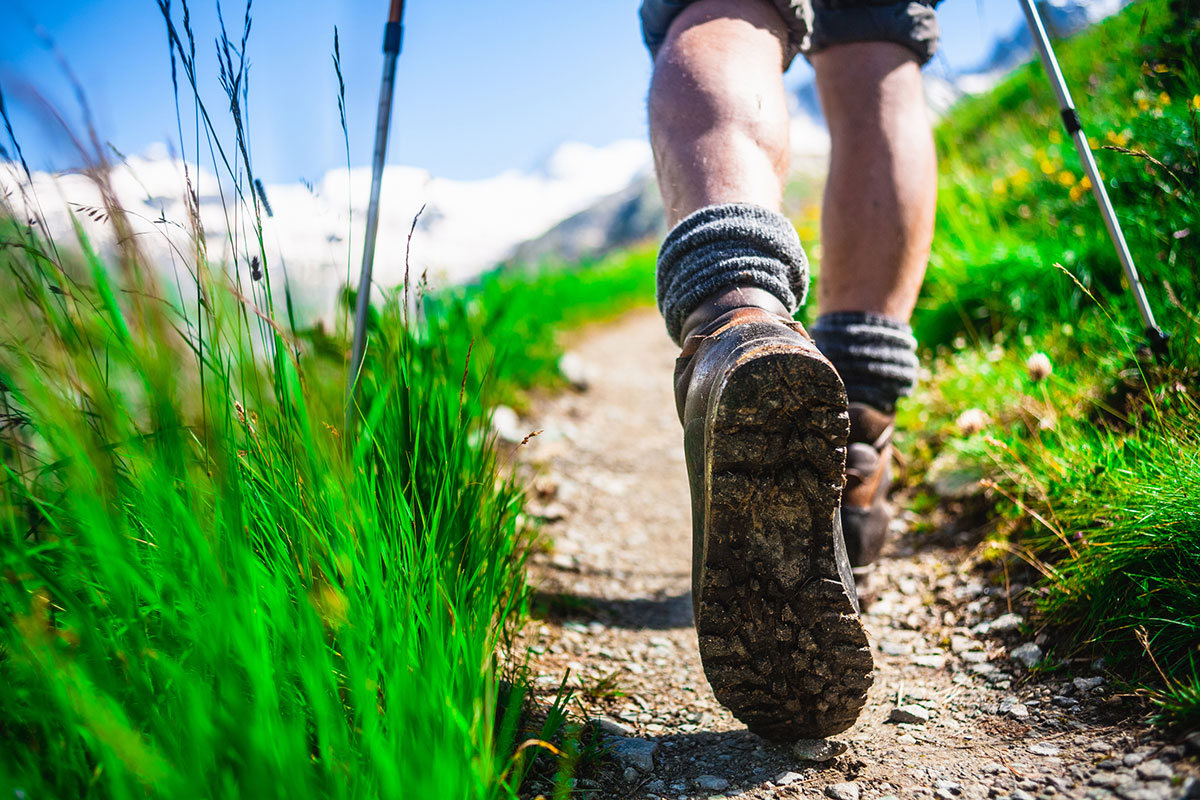
“Pole, pole” is something you’ll hear often on Mt. Kilimanjaro. It’s Swahili for “slowly, slowly,” and it’s a reminder to slow down, trek carefully and rely on smaller steps as you ascend to Uhuru Peak, all the way up at 19,341’. One way to deliberately trek “pole, pole” is to use the rest step, also called the mountaineer’s step. Read our guide below to learn how to perform this move and why so many trekkers consider it a powerful asset on Kilimanjaro.
Rest Step Technique
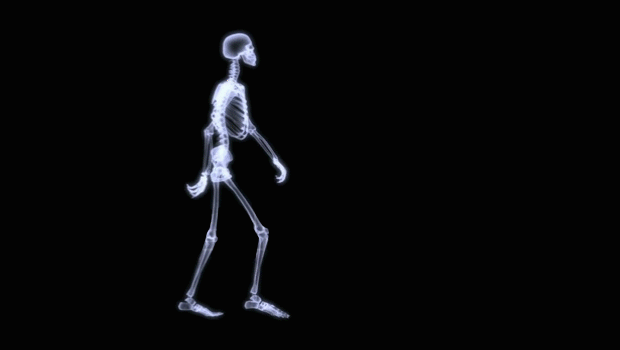
To perform the rest step, you should be stepping forward on an upward climb. As you step, lock your rear knee and keep all of your weight on that rear leg. Swing your other leg forward, relaxing all of its muscles. Once the swinging foot comes to rest on the ground, keep it relaxed so there’s no weight on it. Stop in that position for as long as you need, even if you only need a second.
When you’re ready, lock your front leg, swing your back leg forward and repeat the process.
Why Not Just Walk Slower?
The rest step provides a suite of energy-saving benefits that you don’t get by simply walking slower.
- Your stamina increases. Locking the back-leg knee takes the work that your muscles would normally do and places it in your bone structure. This saves energy.
- You’ll use your quads less. If both knees are bent when you hike, you’re using both quadriceps, thereby using vast amounts of energy. Ideally, the rest step only lets you use one leg at a time, since your bones are doing all the work in the other leg.
- Your legs, hip and back muscles get a rest for a short moment. On Kili, when you’re hiking for hours and days at a time, those short moments add up.
- You save additional energy because you aren’t speeding up and slowing down, but moving at a consistent, long-haul pace.
Should I Train with the Rest Step?
Plenty of trekkers have summited Kilimanjaro without the rest step. In fact, no technical experience or specialized gear is required on any part of Kili, making it the most accessible of the world’s Seven Summits. You’ll be okay if you don’t learn this.
However, rest step hiking is a valuable skillset that will carry you farther and with less energy. If you have the time and conditions, it’s worth practicing–your body will thank you on your approach to Uhuru Peak. Those who do use this technique at Kili’s high altitudes, where oxygen is less abundant, keenly feel the positive effects.
Vital Tips to Make the Rest Step Truly Effective
- Establish a consistent stepping rhythm. This will ensure you are using a consistent amount of oxygen per step, and are never at a deficit. How do you do this? Let’s look at number two.
- Take steps of roughly the same length as often as possible. When you vary your stride, your velocity changes and your legs use energy inefficiently.
- Anchor every step. Make firm contact with the sole of your foot when it lands in front of you. This provides a solid support for your body weight when that leg rests.
- Try thinking of the rest step as a series of push-offs. When you lock your knee with one leg, the other leg should literally swing forward, providing enough momentum to carry you ahead with surprisingly little effort.
- Finally, let your lungs determine your pace, not your legs. If you’re tired and breathless, rest longer before stepping again. Your step will ideally fall into a harmonious rhythm with your breath.
Congrats! You’ve got the rest step down–are you ready for the next (aerobic) step? Learn more here.

